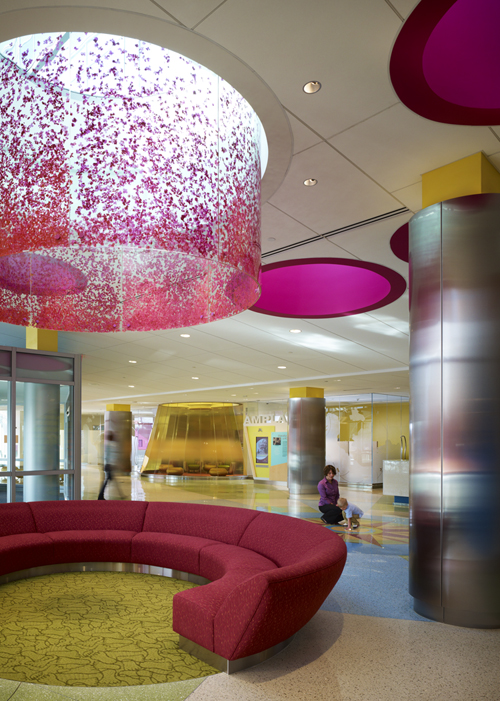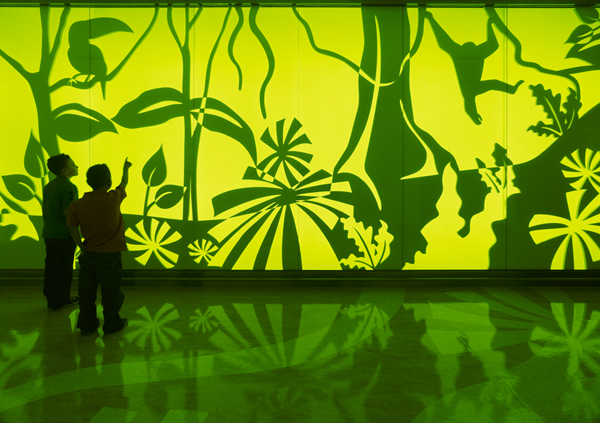Subscribe Now
Healthcare Lighting Trends: From Hospital to Hospitality to Innovating with LEDs
 By Tao Ham
By Tao Ham
This is an exciting time for the lighting industry. Lighting designers have enjoyed an innovative journey bringing hospitality to healthcare facilities. Efforts began by introducing natural daylight to interior spaces and have moved to creating hospitable, healing experiences with colors, textures and lights.
When it comes to light-emitting diodes, the ongoing evolution of LED technology has given healthcare lighting designers new options for color use and energy-efficient design.
LEDs, light and the patient experience
Ongoing research studying light and human health provides a much-needed knowledge base to incorporate lighting technology and quality with healthcare design. Designing lighting systems that change colors from day to night was inconceivable until LED technology made color changing feasible and affordable. Before this technology, changing a light’s color meant physically changing a light or gel. Now, it is a simpler matter of programming an LED to a color, such as amber.
A growing body of research has elevated our understanding on the non-visual effects of light, such as how light affects our circadian rhythm. For example, research provides knowledge-based design decisions that inform us that an amber colored nightlight should be used in a patient’s room to have minimum disturbance to the their sleep cycle. Additionally, light colors can keep staff alert throughout long shifts. As the research in light and human health evolves, the demand of incorporating the knowledge-based design in healthcare will increase.
Hospitality and LEDs
New LED technology provides a great potential and flexibility as lighting trends continue to move toward quality, energy efficient and maintainable lighting systems for healthcare facilities. For example, the University of Minnesota Amplatz Children’s Hospital bed tower (in association with Tsoi/Kobus & Associates Architects) embraces the University’s vision of “Driven to Discover.” The design theme, Passport to Discovery, focuses on providing inspiring environments for young patients and their families. This is visualized by intriguing compositions of colors and patterns, translucent materials and textures. Many of these visual impacts are realized by light.
Carrying creative use of material, color and light into the interiors, the lobby features a glass cylinder with casted flower paddles and circular skylights. The bold colors generate a stunning visual impact, intensified by daylight. The glass cylinder and surrounding walls are also illuminated to balance daylighting during the day and create drama at night.
The patient elevator lobby features layered backlit panels with thematic graphics and color. Fluorescent strips and colored gels are used to create the saturated light color. The two-foot wide cavity with an access door behind the backlit panel is designed for easy maintenance.
Taking advantage of LED technology, a color-changing LED cove and control system was designed for all patient rooms so patients can personalize their room with light.
As utilized at Amplatz, lighting will continue to be an effective strategy in creating healthcare designs that promote healing, well-being and productivity. 
LED efficiencies
Lighting designers are very aware of energy efficiencies and are constantly looking to create quality, hospitable lighting environments with the most energy-efficient equipment. LEDs provide energy savings of 75 percent over incandescent lamps and could save more energy compared to the other energy-efficient light sources, such as fluorescent and ceramic metal halide. They are less toxic than fluorescent lamps, which contain mercury. They are also are easier to maintain and last longer; most have a life of up to 50,000 hours.
LED technology has evolved quickly and provides tremendous flexibility. For example, the new generation of LED downlights consumes less energy and last three times longer than the other sources such as fluorescent and metal halide downlights. The color rendering, color consistency and glare control of LED downlights has improved greatly, which make LED downlights a viable option for many applications.
Lastly, in addition to energy consumption, the quality of light should also be evaluated when approaching healthcare lighting projects. Replacing every existing fixture with an LED source is a step in the right direction for some applications, but LED lighting technology is still not at the point of replacing all other light sources. The specific application still needs to be taken into consideration to utilize the appropriate lamp and fixture type.
Tao Ham is a senior lighting designer at HGA.
Photos by Nick Merrick/Hedrich Blessing
Editor’s Note: Stay tuned for the March/April issue of MCD, which spotlights lighting.
Posted March 13, 2013
More Articles:
- Coverings 2024
Apr 22, 2024 – Apr 25, 2024 - Hospital, Outpatient Facilities & Medical Office Buildings Summit
Apr 25, 2024 – Apr 25, 2024 - CxA Workshop & Exam
Apr 29, 2024 – Apr 30, 2024 - EMP Seminar & Exam at CxEnergy 2024
Apr 29, 2024 – Apr 30, 2024 - CxEnergy
Apr 29, 2024 – May 2, 2024 - PHCC West 2024
Apr 29, 2024 – May 2, 2024 - Lean in Design Forum 2024
May 1, 2024 – May 2, 2024










